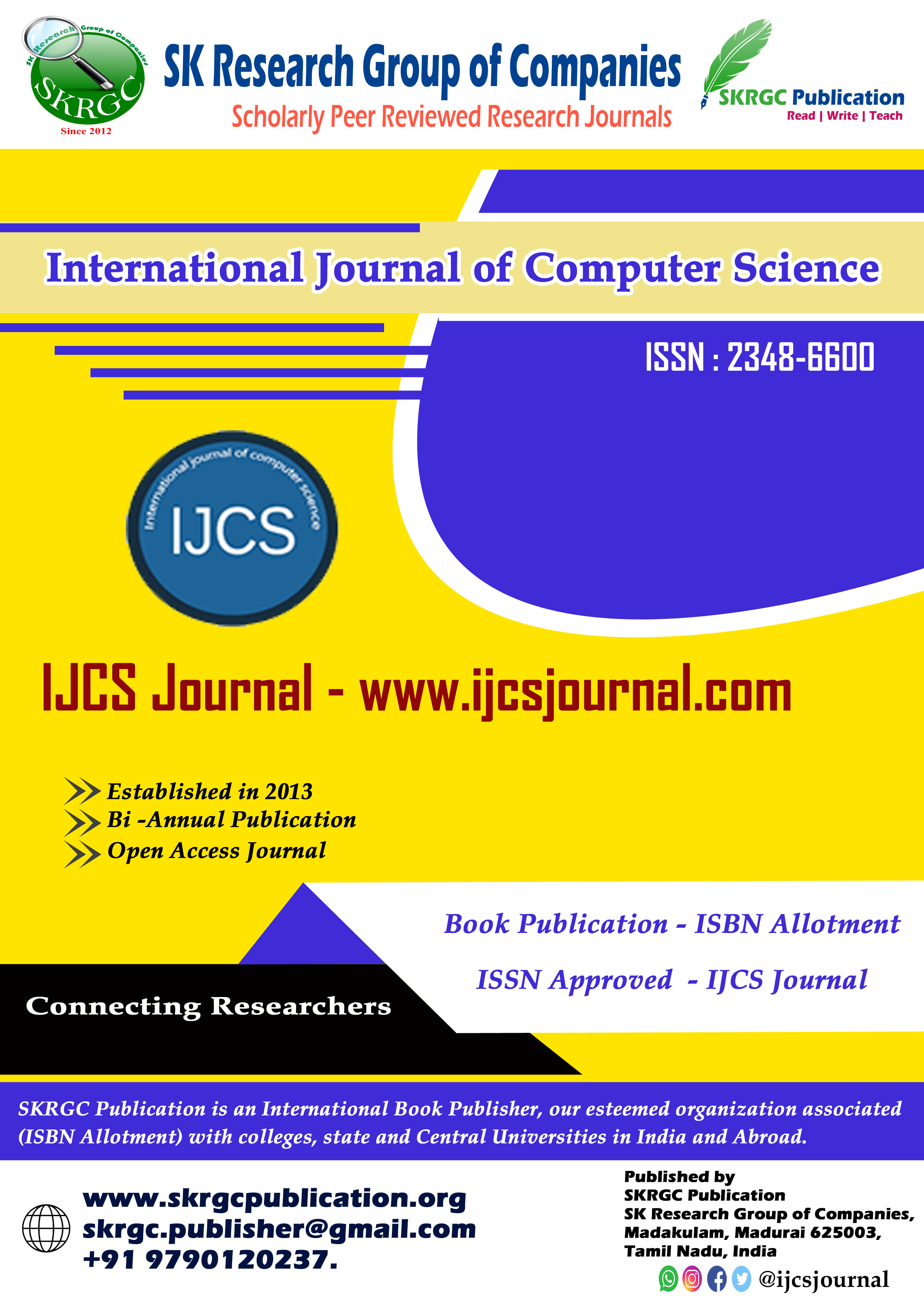A STUDY ON THE EFFECT OF BRIDGE COURSES ON STUDENTS AT TERTIARY LEVEL IN MADURAI CITY
International Journal of Computer Science (IJCS) Published by SK Research Group of Companies (SKRGC).
Download this PDF format
Abstract
During the previous 10 years, the significance of connecting with undergrad students in research exercises acquired reestablished consideration internationally. Undergrad students not exclusively ought to secure information about the results of past exploration done by others; they ought to likewise figure out how to start and do investigate themselves. Expected benefits of undergrad research exercises are that students figure out how specialists in the field work, think, and communicate and that students create their basic, logical, and imaginative reasoning abilities as well as their critical abilities to think. There appears to deprecate conflict on the significance of these likely merits. Bridge courses give a satisfactory establishment in the center applied science subject. Subsequently students face no hardships when college programs start. This course offers a better development stage for students than get themselves up prior to beginning the first semester. They would focus on undergrad studies to beat hindrances between subjects educated at the pre-college level. Moreover, they will become familiar with a portion of the subjects in college beforehand. The bridge course fills in as a support for the new way. Prior to starting the fundamental year course, it will outfit students with data. Moreover, it will likewise give conviction through interactive and dynamic learning. Each Division is responsible for running its framework by making its prospectus. The bridge course is simply a beginning stage, not an objective. Establishments should follow up the bridge course consistently. Hence, this current study has been focused to give an outline on the effect of bridge courses on students at tertiary level.
References
1. Aleksi?, Veljko & Ivanovic, Mirjana. (2013). Blended Learning in Tertiary Education: A Case Study.
2. Al-Hariri, Mohammed & Al-Hattami, Abdulghani. (2017). Impact of students' use of technology on their learning achievements in physiology courses at the University of Dammam. Journal of Taibah University Medical Sciences. 12. 82–85. 10.1016/j.jtumed.2016.07.004.
3. Briggs, Ann & Clark, Jill & Hall, I.. (2012). Building bridges: Understanding student transition to university. Quality in Higher Education. 18. 3-21. 10.1080/13538322.2011.614468.
4. Chakraborty, Bidisha. (2018). Education as an instrument of social change and enhancing teaching-learning process with the help of technological development.
5. Chiteng Kot, Felly. (2018). Bridge Program Participation and Undergraduate Academic Performance.
6. Chowdary, K.Y. & Singh, R.U. & Reddy, G.V.. (2018). Role of bridge course in the academic success of the engineering graduates. Journal of Engineering Education Transformations. 31. 141-145.
7. Davies, John & Welch, Casey & Hargis, Jace. (2008). The Bridge Course Design: Formative Assessment and Student-Centered Learning in Cross-Course Classrooms. International Journal for the Scholarship of Teaching and Learning. 2. 10.20429/ijsotl.2008.020206.
8. Eitemüller, Carolin & Habig, Sebastian. (2020). Enhancing the transition? – effects of a tertiary bridging course in chemistry. Chemistry Education Research and Practice. 21. 10.1039/C9RP00207C.
9. El-Seoud, Samir & Taj-Eddin, Islam & Seddiek, Naglaa & Mohamed, Mahmoud & Nosseir, Ann. (2014). E-Learning and Students' Motivation: A Research Study on the Effect of E-Learning on Higher Education. International Journal of Emerging Technologies in Learning (iJET). Vol. 9. 20-26. 10.3991/ijet.v9i4.3465.
10. Hynie, Michaela & Jensen, Krista & Johnny, Michael & Wedlock, Jane & Phipps, David. (2011). Student internships bridge research to real world problems. Education + Training. 53. 10.1108/00400911111115753.
11. Jr, James & Stader, David. (2012). Effectiveness of Summer Bridge Programs in Enhancing College Readiness. Community College Journal of Research and Practice. 36. 340-357. 10.1080/10668920802708595.
12. Meredith, Sandra & Burkle, Martha. (2008). Building bridges between university and industry: Theory and practice. Education + Training. 50. 199-215. 10.1108/00400910810873982.
13. Onyema, Edeh & Eucheria, Nwafor & Uchenna, Ezeanya & Nkiruka, Patricia & Eucheria, Ani. (2020). Impact of E-learning Platforms on Students' Interest and Academic Achievement in Data Structure Course. 1. 1-16.
14. Salamat, P & Ahmad, L & Bakht, G & Saifi, Dr-Imran. (2018). EFFECTS OF E–LEARNING ON STUDENTS’ ACADEMIC LEARNING AT UNIVERSITY LEVEL. Asian Journal of Social Sciences & Humanities.
15. Shea, Peter. (2007). Bridges and barriers to teaching online college courses: A study of experienced online faculty in thirty-six colleges. Journal of Asynchronous Learning Networks. 11. 10.24059/olj.v11i2.1728.
16. Singh, BN Balaji & Kumar, Raj & G, Shailesh. (2014). Bridge Program-An Effective Tool for Transition of Students from Pre-University to University.
17. Snijders, Ingrid & Wijnia, Lisette & Rikers, Remy & Loyens, Sofie. (2020). Building bridges in higher education: Student-faculty relationship quality, student engagement, and student loyalty. International Journal of Educational Research. 100. 101538. 10.1016/j.ijer.2020.101538.
18. Wiliam, Dylan. (2013). Assessment: The bridge between teaching and learning. Voices from the Middle. 21. 15-20.
19. Xu, Di & Jaggars, Shanna. (2013). The Impact of Online Learning on Students’ Course Outcomes: Evidence from a Large Community and Technical College System. Economics of Education Review. 37. 46–57. 10.1016/j.econedurev.2013.08.001.
20. Yin, Hongbiao & Ke, Zheng. (2017). Students’ course experience and engagement: An attempt to bridge two lines of research on the quality of undergraduate education. Assessment & Evaluation in Higher Education. 42. 1145-1158. 10.1080/02602938.2016.1235679.
Keywords
Bridging Gap, Potential Creation, Professionalism, Non-Scholastic Educational Program, Standard Identification, Guidance and College Adoption.

